Previous Day - Next Day
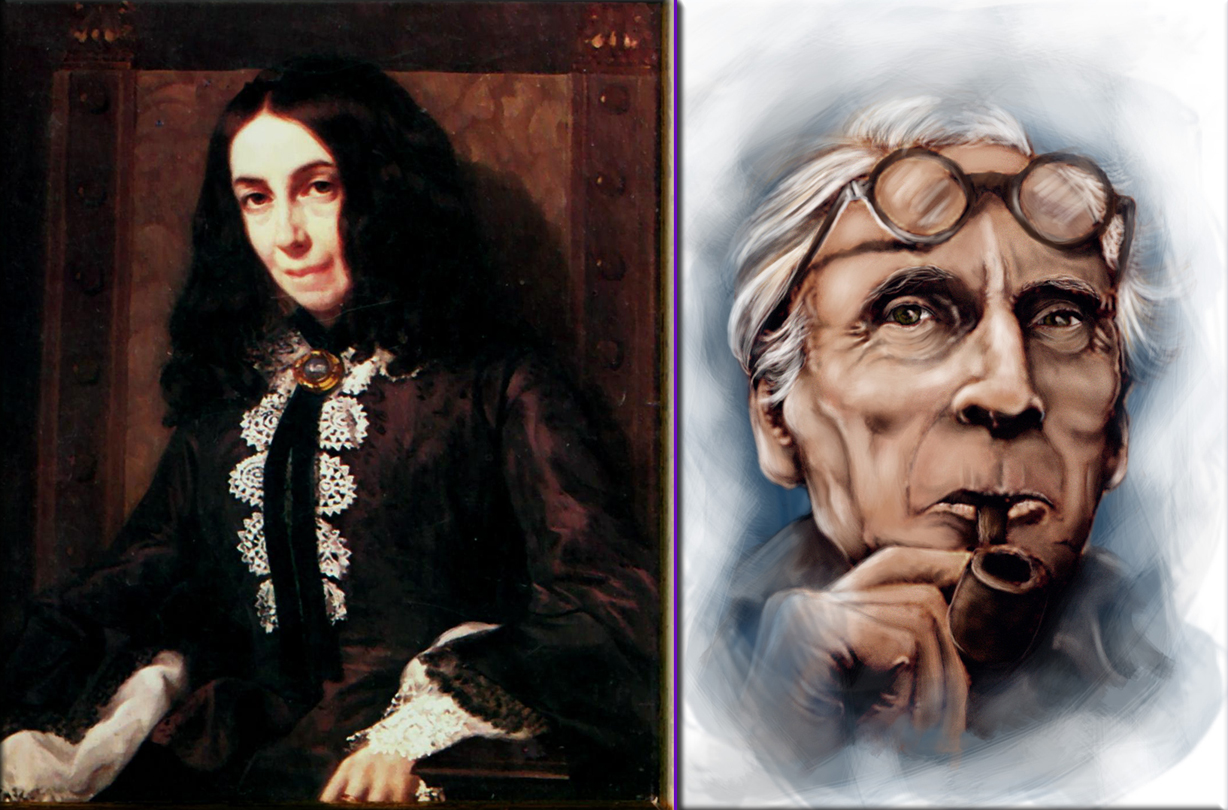
“Love me for love's sake, that evermore thou may'st love on, through love's eternity.” ~ Elizabeth Barrett Browning
“To fear love is to fear life, and those who fear life are already three parts dead.” ~ Bertrand Russell
Wikiquote (Elizabeth Barrett Browning (March 6, 1806 – June 29, 1861) was one of the most prominent poets of the Victorian era.)
(Bertrand Russell (OM, FRS (May 18, 1872 – February 2, 1970) was a British philosopher, logician, mathematician, historian, and social critic.)
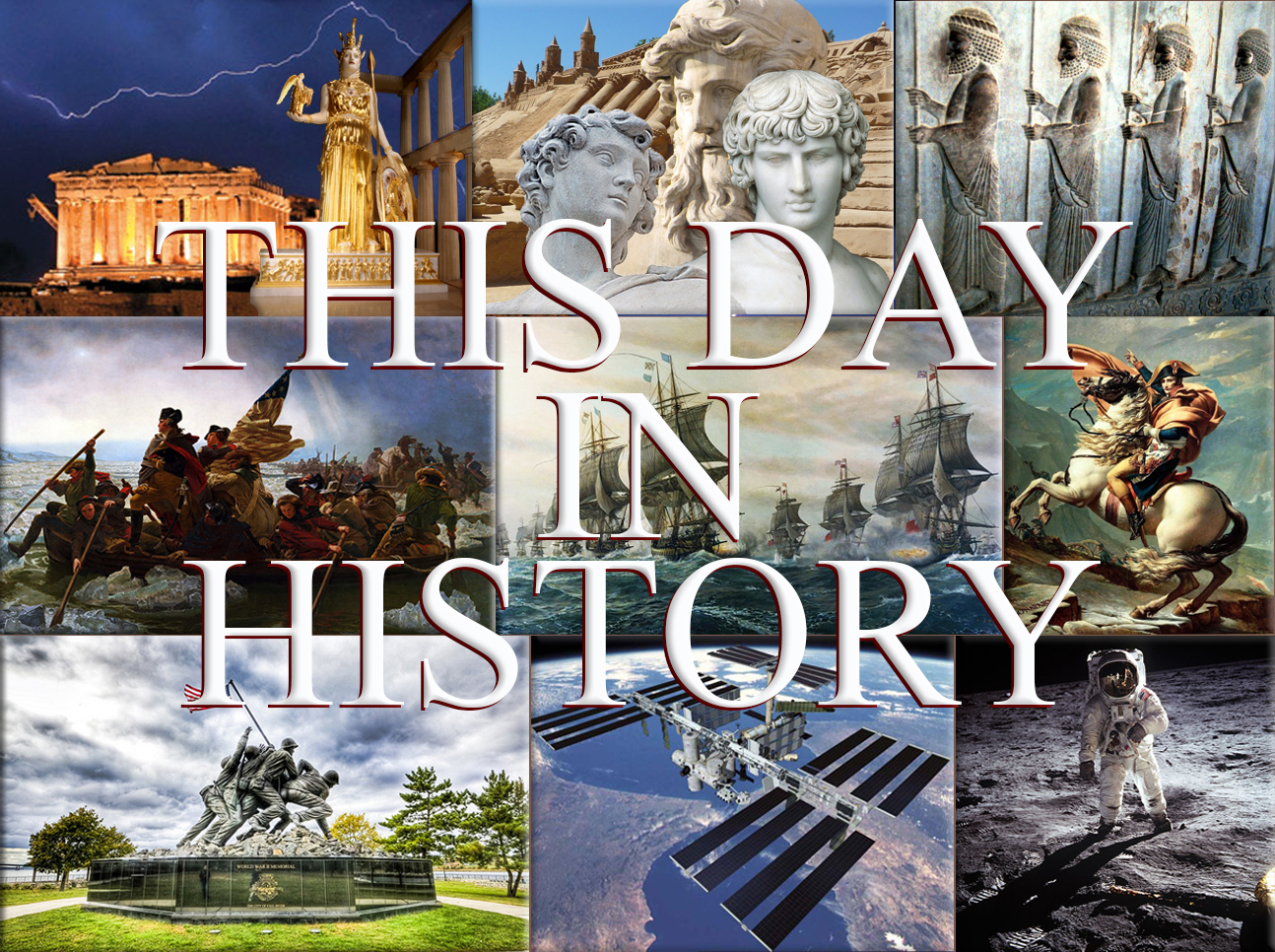
May 18th, 332
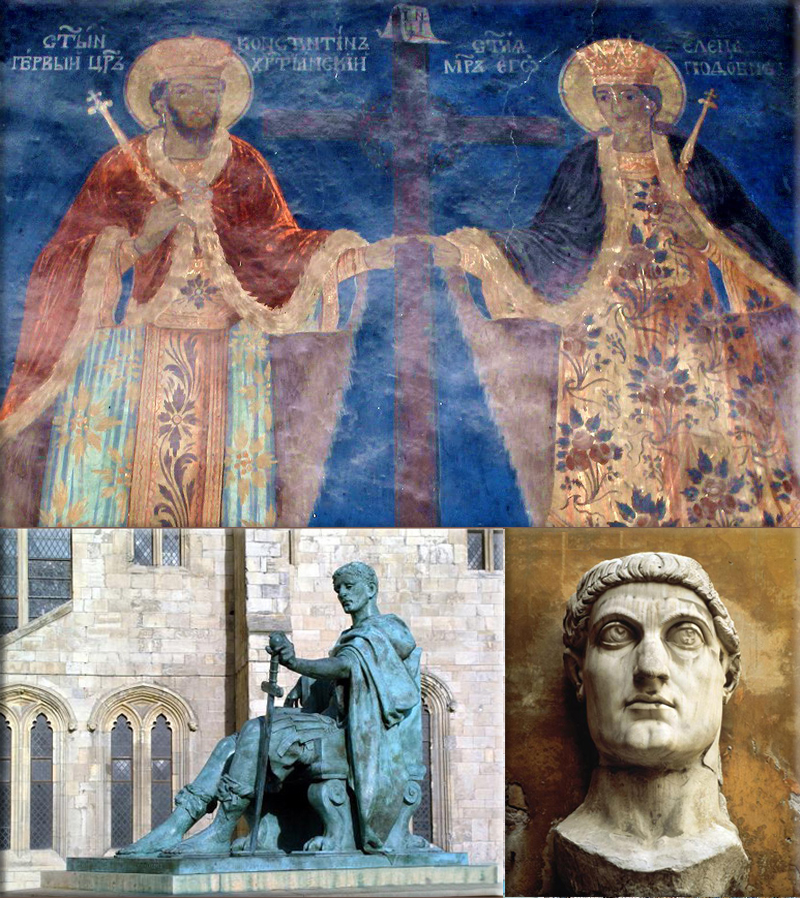
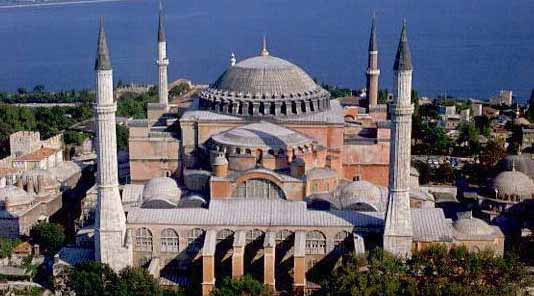
Roman Empire:
332 - Constantine the Great announced free distributions of food to the citizens in Constantinople.
Wikipedia Image: Fresco from Monastery of St. Jovan, above the village Gornji Matejevac near Nis. depicting St. Constantine the Great and his wife, holding the cross; Bronze statue of Constantine I in York, England, near the spot where he was proclaimed Augustus in 306; Constantine the Great, mosaic in Hagia Sophia, 1000.
Photo: Byzantine Empire is the great church of Hagia Sophia (Church of the Holy Wisdom) in Constantinople (562).
May 18th, 1152
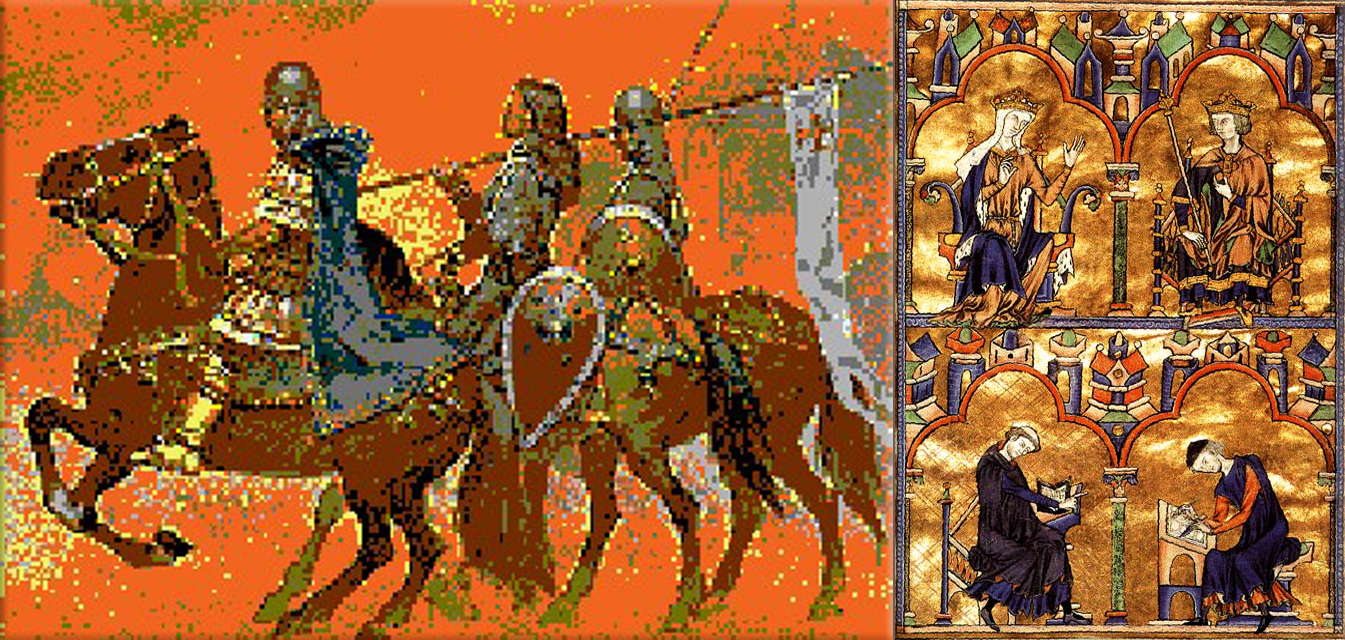
Henry II of England marries Eleanor of Aquitaine.
Wikipedia Image: Eleanor of Aquitaine (1120-1204) took the cross with her first husband Louis VII of France and scandalized Europe by leading 300 of her women dressed as amazons and a thousand of her knights from her duchy in the armies of the Second Crusade. credit University of Michigan.edu
May 18th, 1268

Crusades:
1268 - Battle of Antioch; The Principality of Antioch a crusader state, falls to the Mamluk Sultan Baibars.
Wikipedia Image: The Siege of Antioch, from a 15th-century miniature; After the successful siege of Jerusalem in 1099, Godfrey of Bouillon, leader of the First Crusade, became the first ruler of the Kingdom of Jerusalem; Baldwin I of Jerusalem; Medieval image of Peter the Hermit, leading knights, soldiers and women toward Jerusalem during the First Crusade; The Battle of Ager Sanguinis, 1337 miniature; Pope Innocent III excommunicating the Albigensians, Massacre against the Albigensians by the crusaders; The capture of Jerusalem marked the First Crusade's success.
May 18th, 1498
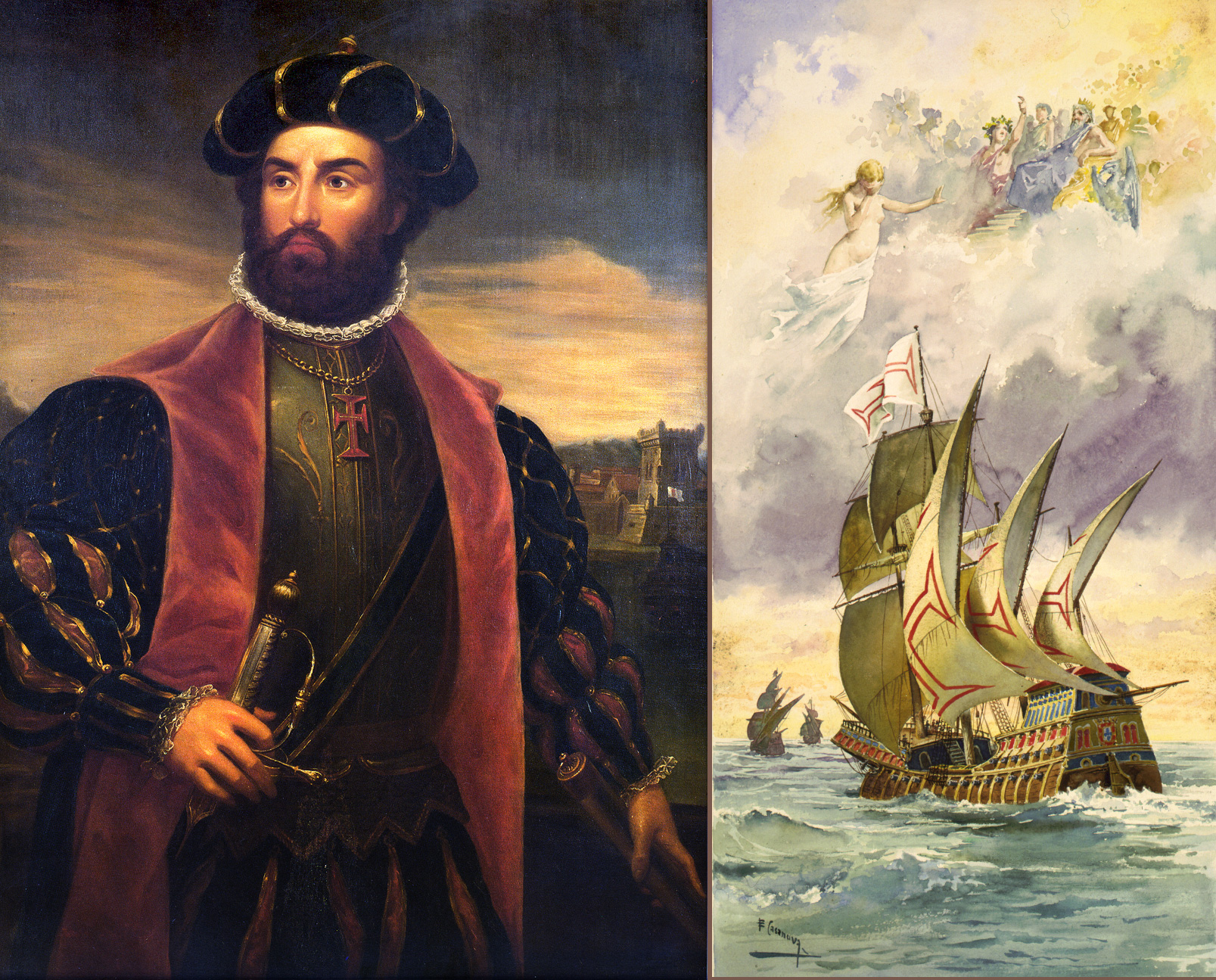
Vasco da Gama reaches the port of Calicut, India.
Wikipedia Painting: Nineteenth century depiction of Vasco da Gama / Vasco da Gama's ship with gods above by Ernesto Casanova (1880)
May 18th, 1499

Conquistador:
1499 - Alonso de Ojeda sets sail from Cadiz on his voyage to what is now Venezuela.
Wikipedia Image: Conquistadors (Spanish "conquerors") were soldiers, explorers, and adventurers at the service of the Spanish Empire (sailing beyond Europe, conquering territory and opening trade routes, colonizing much of the world for Spain and Portugal in the 15th, 16th, and 17th centuries)
● Christopher Columbus setting foot in the New World in 1492
● Conquistadors praying before a battle
● Conquistadors and their Tlaxcalan allies enter Tenochtitlan
● The surrender of Granada in 1492. Muhammad XII before Ferdinand and Isabella
● Detail of Velázquez's Portrait of Juan de Pareja a contemporary morisco Spaniard, slave and afterwards freedman, assistant and trust man of Diego Velazquez
● Conquistador, jQuey-deviantart.
May 18th, 1565

Ottoman Empire (Turkish Empire or Turkey):
1565 - Siege of Malta; begins, in which Ottoman forces attempt and fail to conquer Malta.
Wikipedia Image: Ottoman Empire Maximal extent with the vassal states of the Ottoman Empire in AD 1590s; Battle of Kosovo (1389); Fall of Constantinople (1453); Sultan Mehmed I Ottoman miniature, 1413-1421; Fall of Constantinople (1453); Siege of Rhodes (1522); Battle of Kosovo (1389); Battle of Mohács (1526).
May 18th, 1652
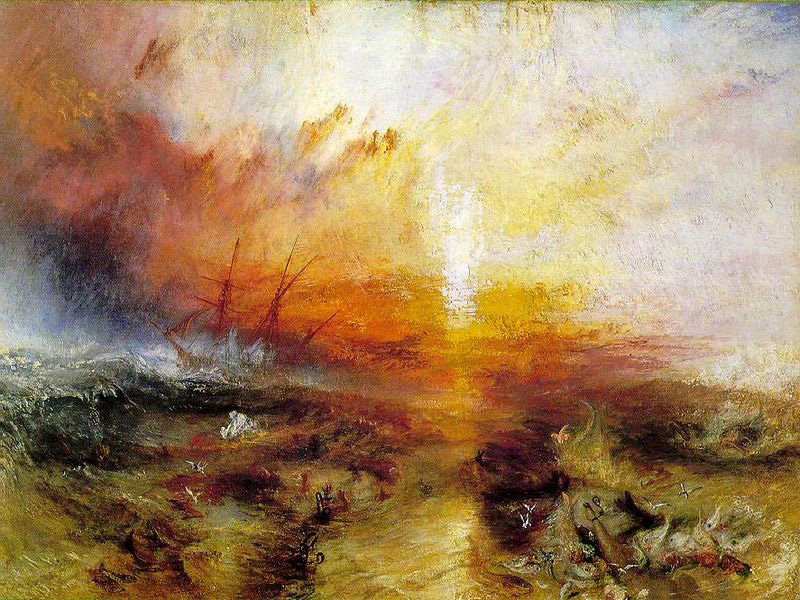
Rhode Island passes the first law in English-speaking North America making slavery illegal.
Wikipedia Painting: The Slave Ship, J. M. W. Turner's representation of the mass-murder of slaves, inspired by the Zong Massacre.
May 18th, 1756
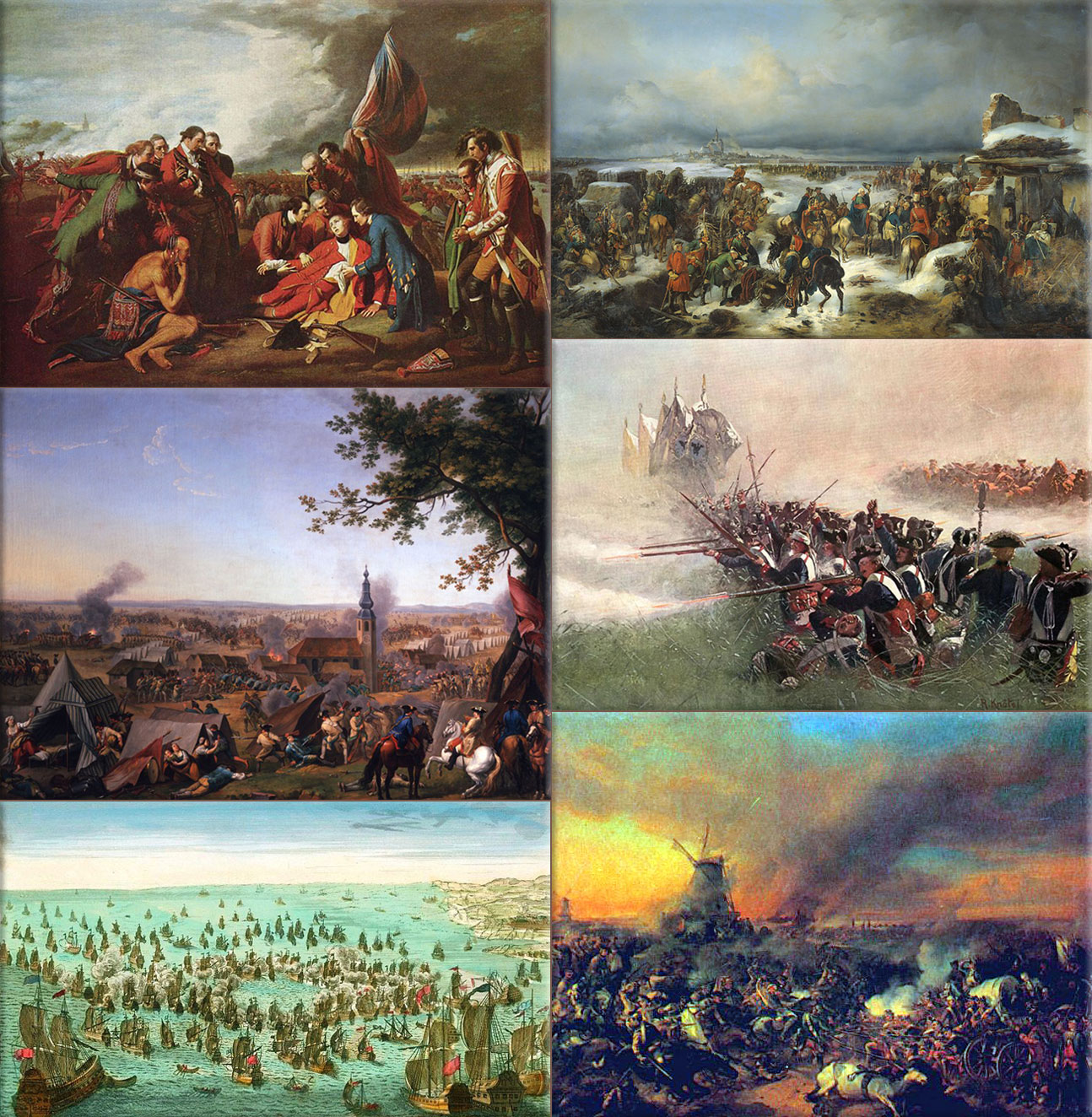
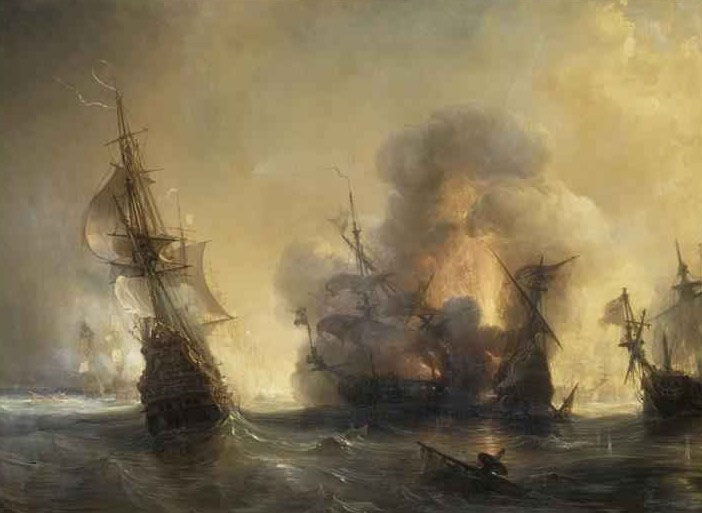
Seven Years' War:
1756 - Begins when Great Britain declares war on France.
Wikipedia Painting: The Death of General Wolfe (1771) by Benjamin West, depicting the Battle of the Plains of Abraham; Battle of Hochkirch; Battle of Minorca of May 20, 1756, shortly after the French landing on Minorca; Siege of Kolberg (1761); Leibgarde battalion at Kolin, 1757; Battle of Zorndorf in August 1758 where Russian and Prussian armies suffered heavy casualties and both claimed a victory. Battle of Lagos, by Théodore Gudin.
May 18th, 1763

Fire destroys a large part of Montreal, Quebec.
Wikipedia Painting: Downtown Montréal panorama and part of its metropolitan area taken from the Chalet du Mont Royal at the top of Mount Royal● Saint Joseph's Oratory is located on Queen Mary Road.
May 18th, 1783
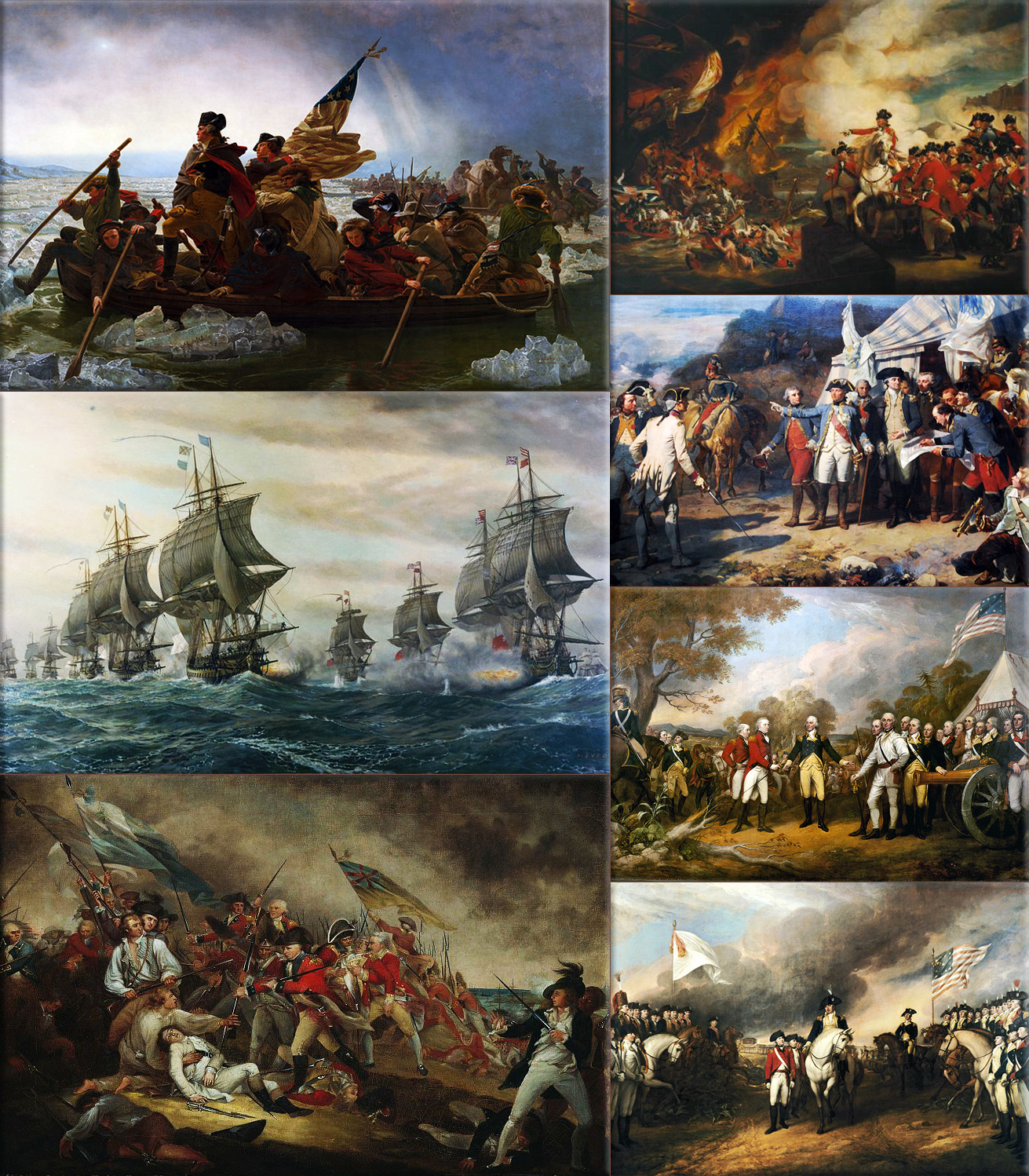
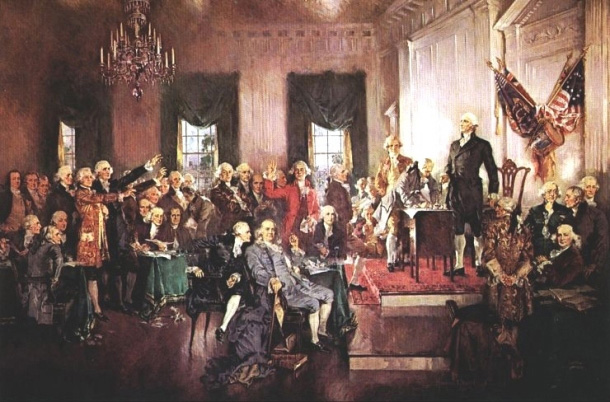
American Revolutionary War:
1783 - First United Empire Loyalists reach Parrtown (later called Saint John), New Brunswick, Canada after leaving the United States.
Wikipedia Paintings: Washington Crossing the Delaware, by Emanuel Leutz; Battle of the Chesapeake, French (left) and British (right) lines; Battle of Bunker Hill, The Death of General Warren at the Battle of Bunker Hill by John Trumbull; The Defeat of the Floating Batteries at Gibraltar, September 13, 1782, by John Singleton Copley; Washington and the Comte de Rochambeau at Yorktown, 1781; "The surrender at Saratoga" shows General Daniel Morgan in front of a French de Vallière 4-pounder; Surrender of Cornwallis at Yorktown by (John Trumbull, 1797).
Signing of the Constitution of the United States.
May 18th, 1803

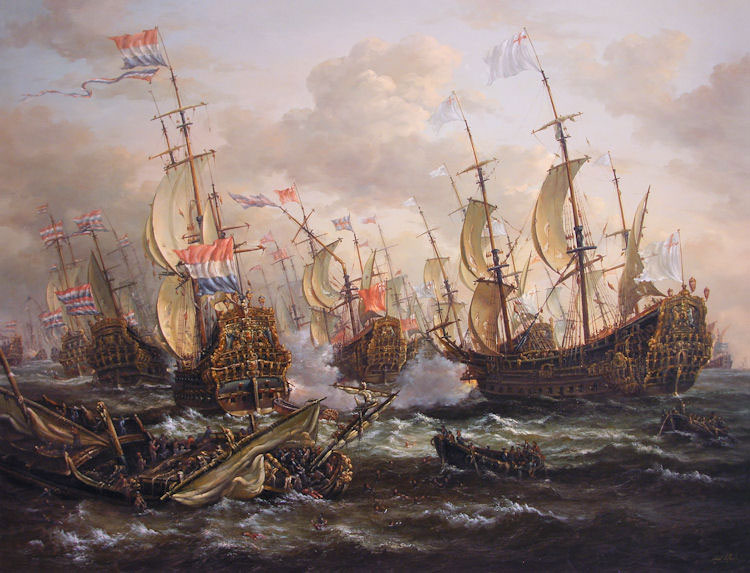
French Revolutionary Wars / Napoleonic Wars:
1803 - The United Kingdom revokes the Treaty of Amiens and declares war on France.
1804 - Napoleon Bonaparte is proclaimed Emperor of the French by the French Senate.
Wikipedia Painting: Battle of Trafalgar: The British HMS Sandwich fires to the French flagship Bucentaure (completely dismasted) in the battle of Trafalgar;
Napoleon in Berlin (Meynier). After defeating Prussian forces at Jena, the French Army entered Berlin on 27 October 1806;
Battle of the Bridge of Arcole Napoleon Bonaparte leading his troops over the bridge of Arcole, by Horace Vernet;
Napoleon as King of Italy (Appiani);
Napoleon Crossing the Alps (David). In 1800 Bonaparte took the French Army across the Alps, eventually defeating the Austrians at Marengo;
Charge of the Russian Imperial Guard cavalry against French cuirassiers at the Battle of Friedland, 14 June 1807;
Battle of Borodino as depicted by Louis Lejeune. The battle was the largest and bloodiest single-day action of the Napoleonic Wars;
Napoleon's withdrawal from Russia, a painting by Adolph Northen;
Wellington at Waterloo by Robert Alexander Hillingford;
Napoleon is often represented in his green colonel uniform of the Chasseur à Cheval, with a large bicorne and a hand-in-waistcoat gesture.
Battle of the Nile (Battle of Aboukir Bay).
May 18th, 1812
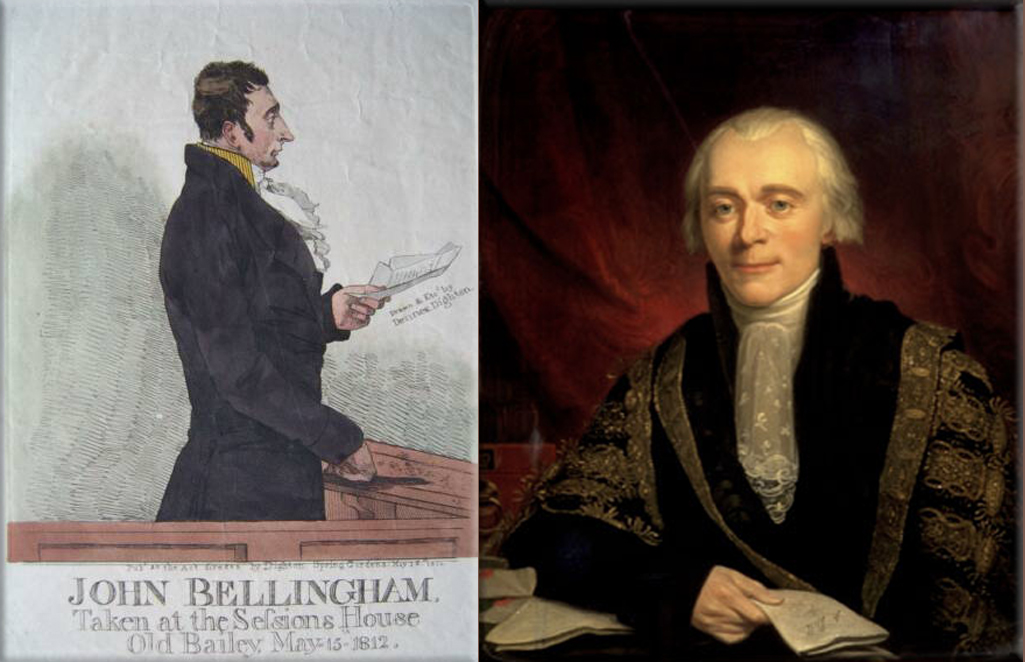
John Bellingham is found guilty and sentenced to death by hanging for the assassination of British Prime Minister Spencer Perceval.
Wikipedia Photo: John Bellingham ● Spencer Perceval painted by George Francis Joseph in 1816.
May 18th, 1860
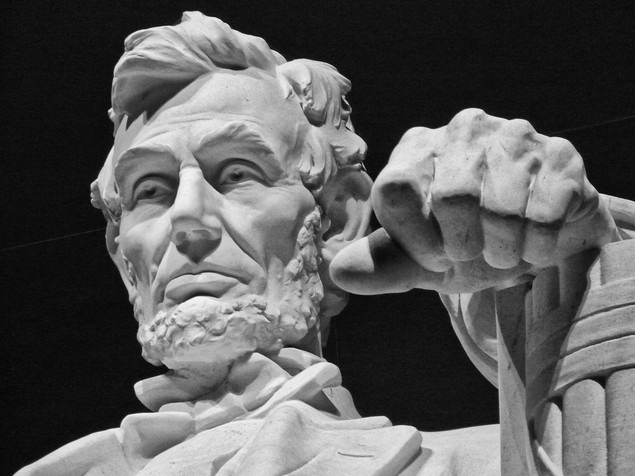
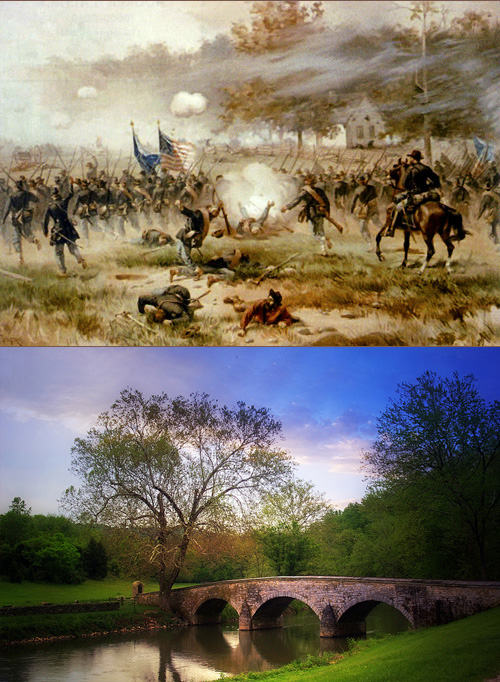
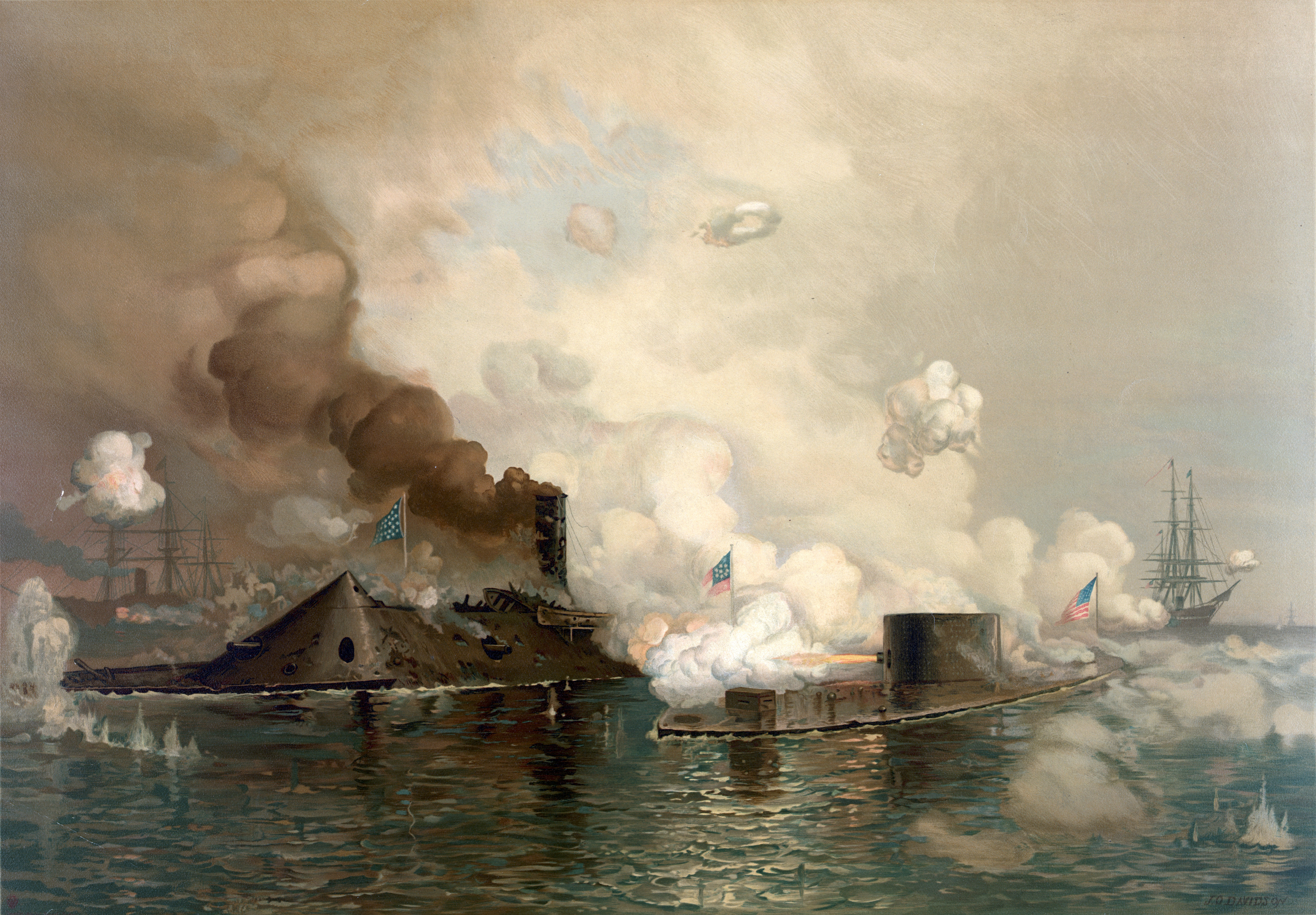
American Civil War:
1860 - Abraham Lincoln wins the Republican Party presidential nomination over William H. Seward, who later becomes the United States Secretary of State.
1863 - Siege of Vicksburg; begins.
Wikipedia Image: ● Lincoln Memorial; an American national monument built to honor the 16th President of the United States, Abraham Lincoln - located on the National Mall in Washington, D.C. across from the Washington Monument.
● The northern army led by George McClellan and the southern army led by Robert E. Lee met at Antietam Creek, Maryland in September, 1862. It was a bloody battle where 13,000 Confederates and 12,000 Union troops died in just one day. McClellan had hesitated to attack before the battle thus letting the southern troops regroup. Also, he had saved reserves and refused to use them at the end of the battle thinking that Lee was holding reserves for a counterattack, even though those reserves didn't exist. The Union victory stopped Lee's northward advance and was a turning point in the war.
● Battle of Antietam / Stone Bridge at Antietam Battlefield - Sharpsburg, Maryland
● First Battle Between Ironclads: CSS Virginia/Merrimac (left) vs. USS Monitor, in 1862 at the Battle of Hampton Roads.
● Although photography was still in its infancy, war correspondents produced thousands of images, bringing the harsh realities of the frontlines to those on the home front in a new and visceral way. The Atlantic.
May 18th, 1896
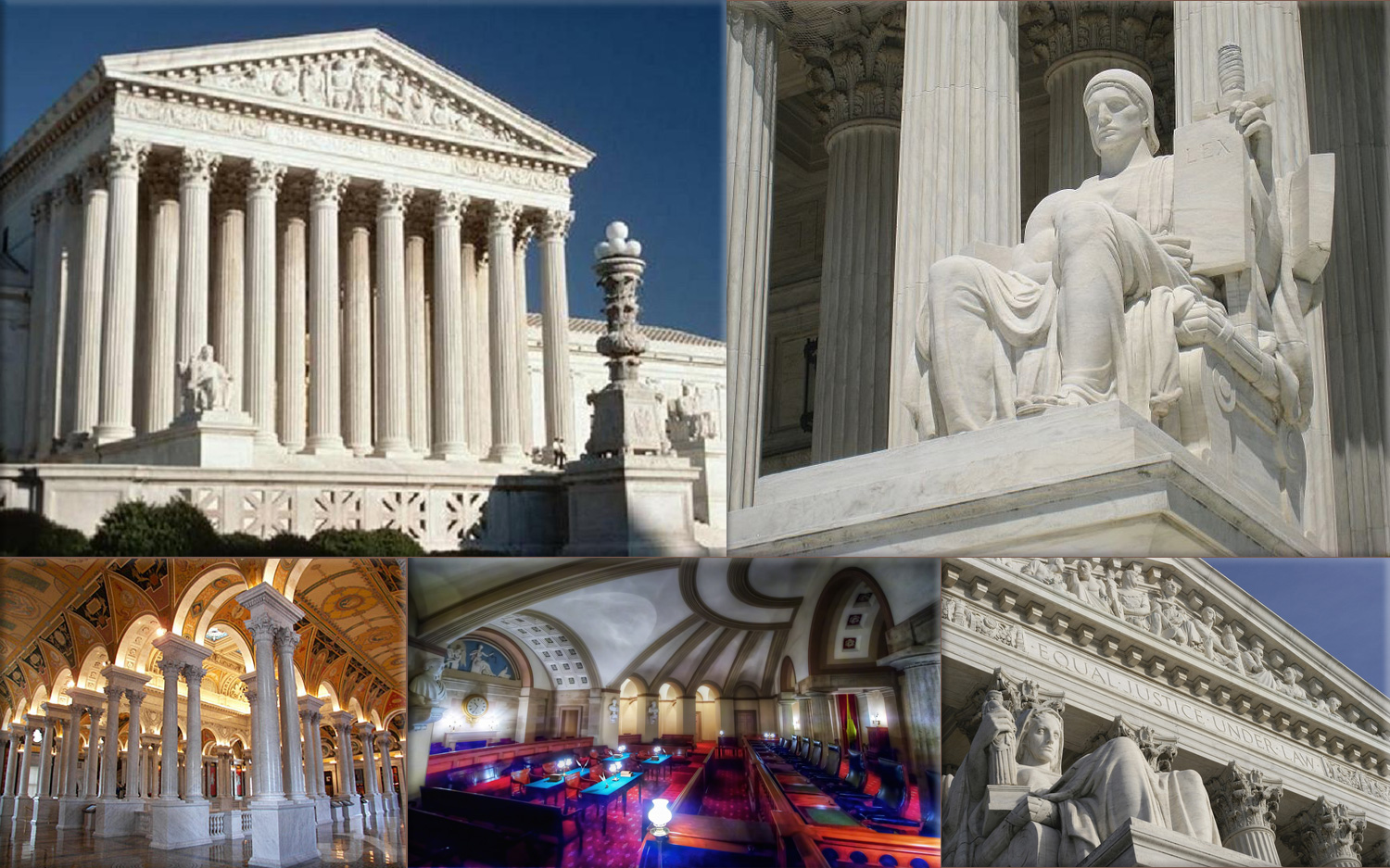
1896 - Plessy v. Ferguson: the Supreme Court of the United States rules that the "separate but equal" doctrine is constitutional.
Wikipedia Photo: United States Supreme Court building; Guardian of Law, by James Earle Fraser, US Supreme Court, Washington, DC, USA.
May 18th, 1896
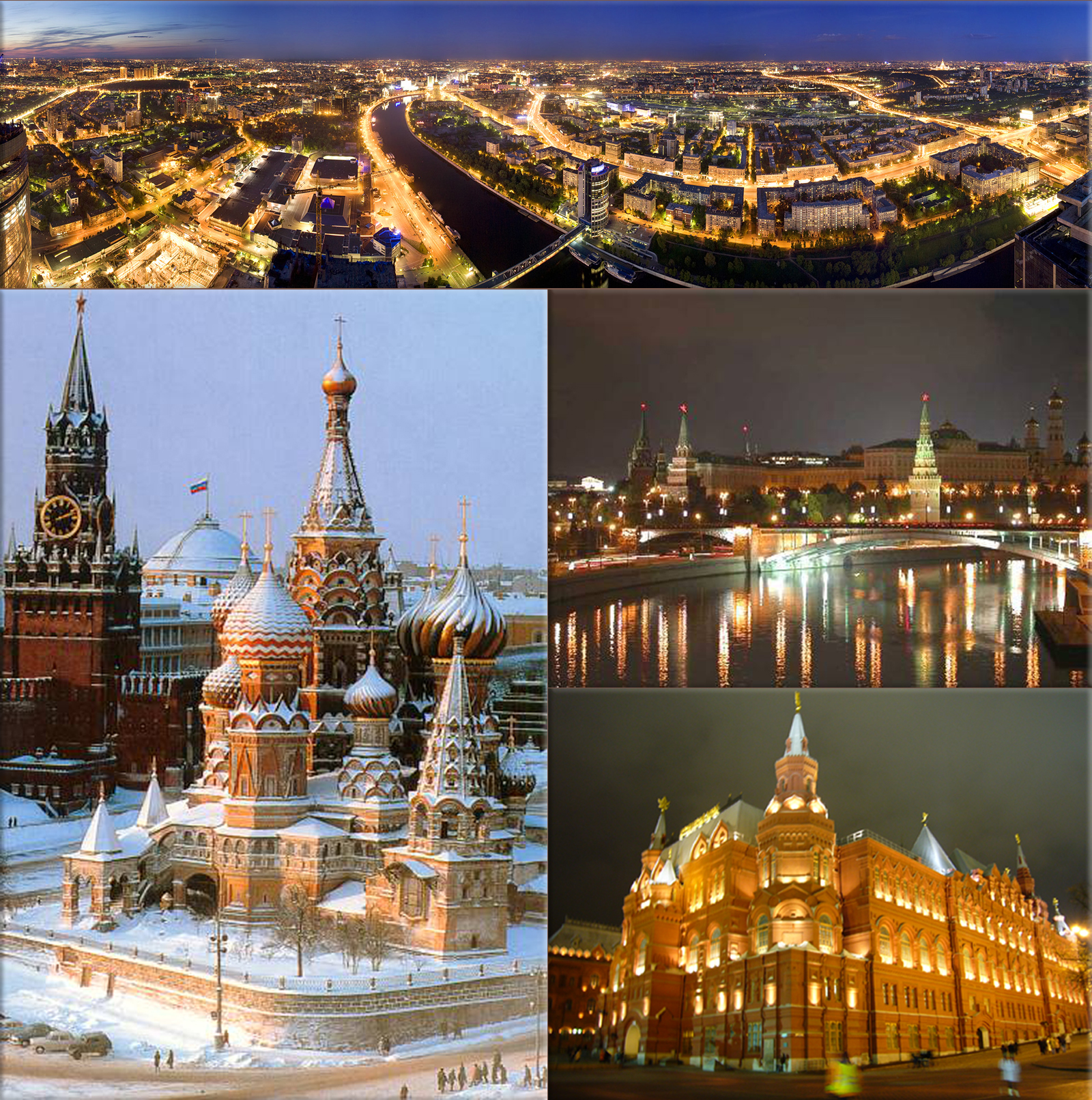
Khodynka Tragedy: In Moscow at Moscow a mass panic at Khodynka Field during the festivities of the coronation of Russian Tsar Nicholas II results in the deaths of 1,389 people.
Wikipedia Photo: Moscow: Capital city and the most populous federal subject of Russia. The city is a major political, economic, cultural and scientific center in Russia and in Europe. (Moscow is the northernmost megacity on Earth, the most populous city in Europe.)
May 18th, 1910
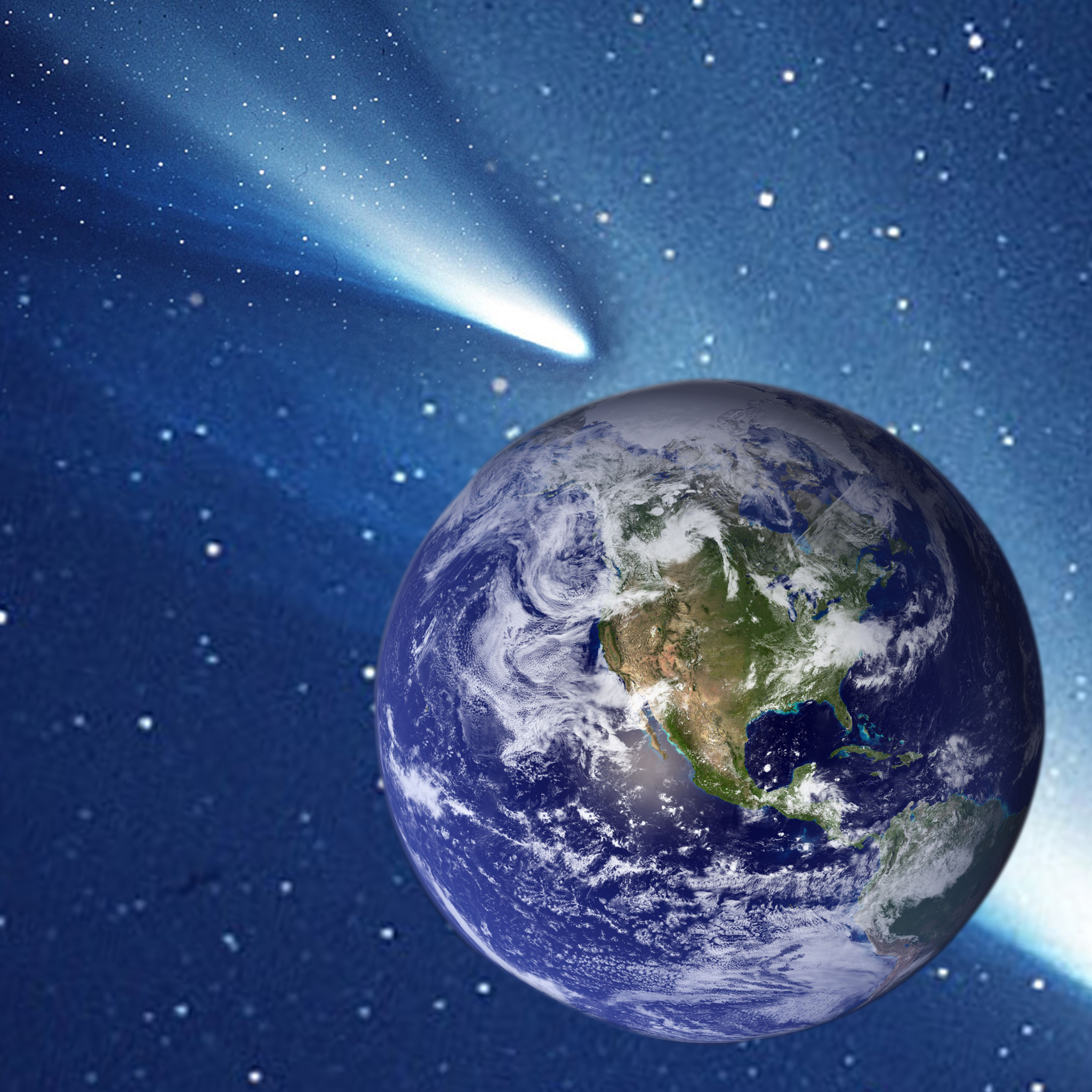
The Earth passes through the tail of Halley's Comet.
Wikipedia Image: Halley's Comet, NASA ● The nucleus of Halley's Comet is an orbiting iceberg. (Halley Multicolor Camera Team, Giotto Project, ESA).
May 18th, 1917

World War I:
1917 - The Selective Service Act of 1917 is passed, giving the United States President the power of conscription.
Wikipedia Photo: Trenches on the Western Front; a British Mark IV Tank crossing a trench; Royal Navy battleship HMS Irresistible sinking after striking a mine at the Battle of the Dardanelles; a Vickers machine gun crew with gas masks, and German Albatros D.III biplanes. National Archives and Records Administration.
May 18th, 1927
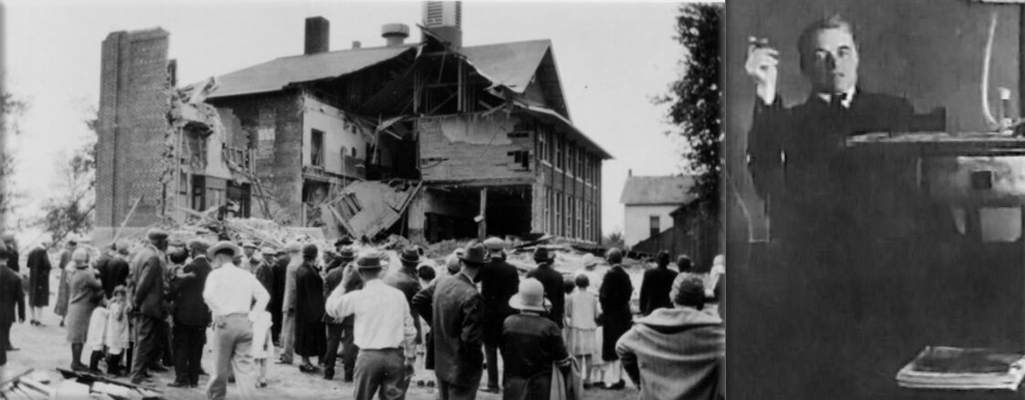
Bath School Disaster: forty-five people are killed by bombs planted by a disgruntled school-board member in Michigan
Wikipedia Photo: Bath School Disaster is the name given to three bombings in Bath Township, Michigan, on May 18, 1927, which killed 38 elementary school children, two teachers. ● Andrew Kehoe treasurer of the Bath Consolidated School board in 1924. (While on the board, Kehoe fought endlessly for lower taxes. On May 18th, Kehoe set off a series of explosions repeatedly due to ill health, property tax levies for his family's poor financial condition, and financial mismanagement.)
May 18th, 1933
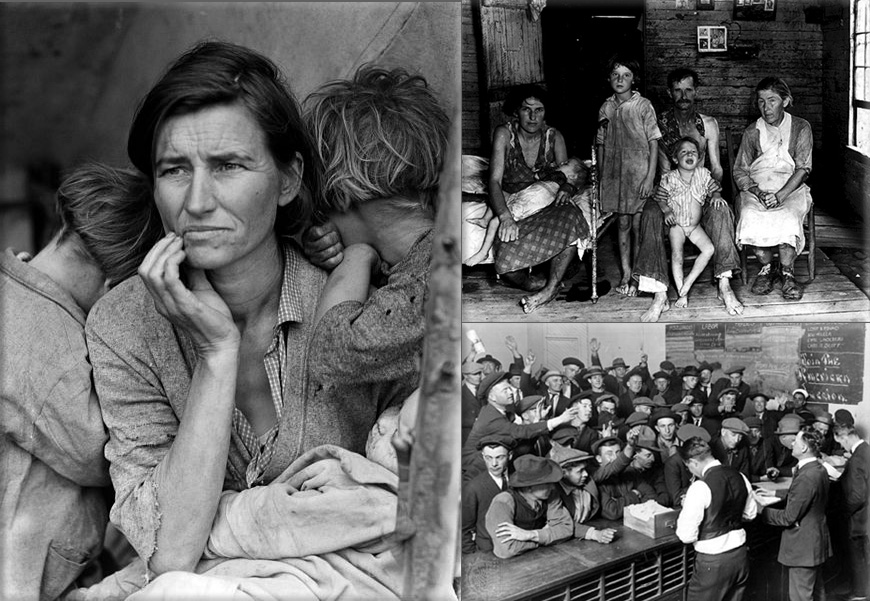
Great Depression: New Deal; President Franklin D. Roosevelt signs an act creating the Tennessee Valley Authority.
Wikipedia Photo: Dorothea Lange's Migrant Mother depicts destitute pea pickers in California, centering on Florence Owens Thompson, age 32, a mother of seven children, in Nipomo, California, March 1936; Bud Fields and his family. Alabama. 1935 or 1936. Photographer: Walker Evans; Unemployed men vying for jobs at the American Legion Employment Bureau in Los Angeles during the Great Depression.
May 18th, 1944
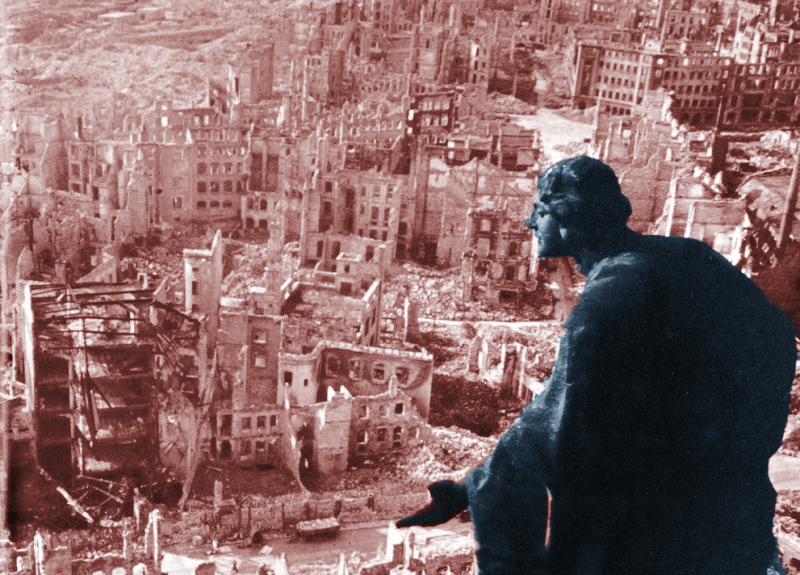

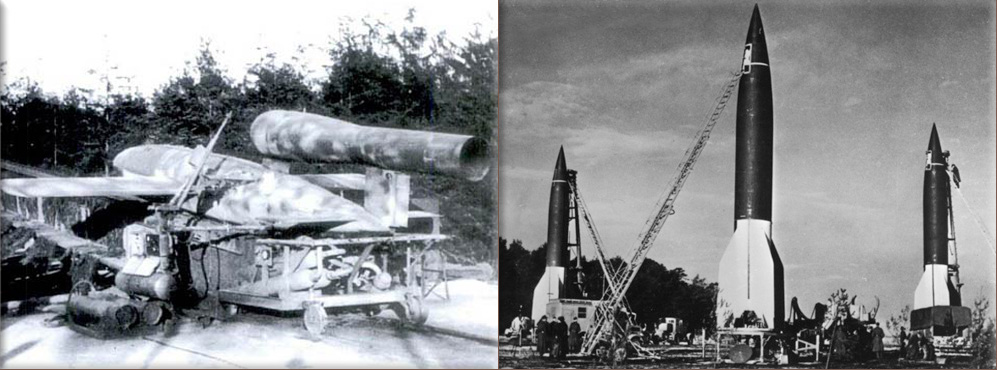
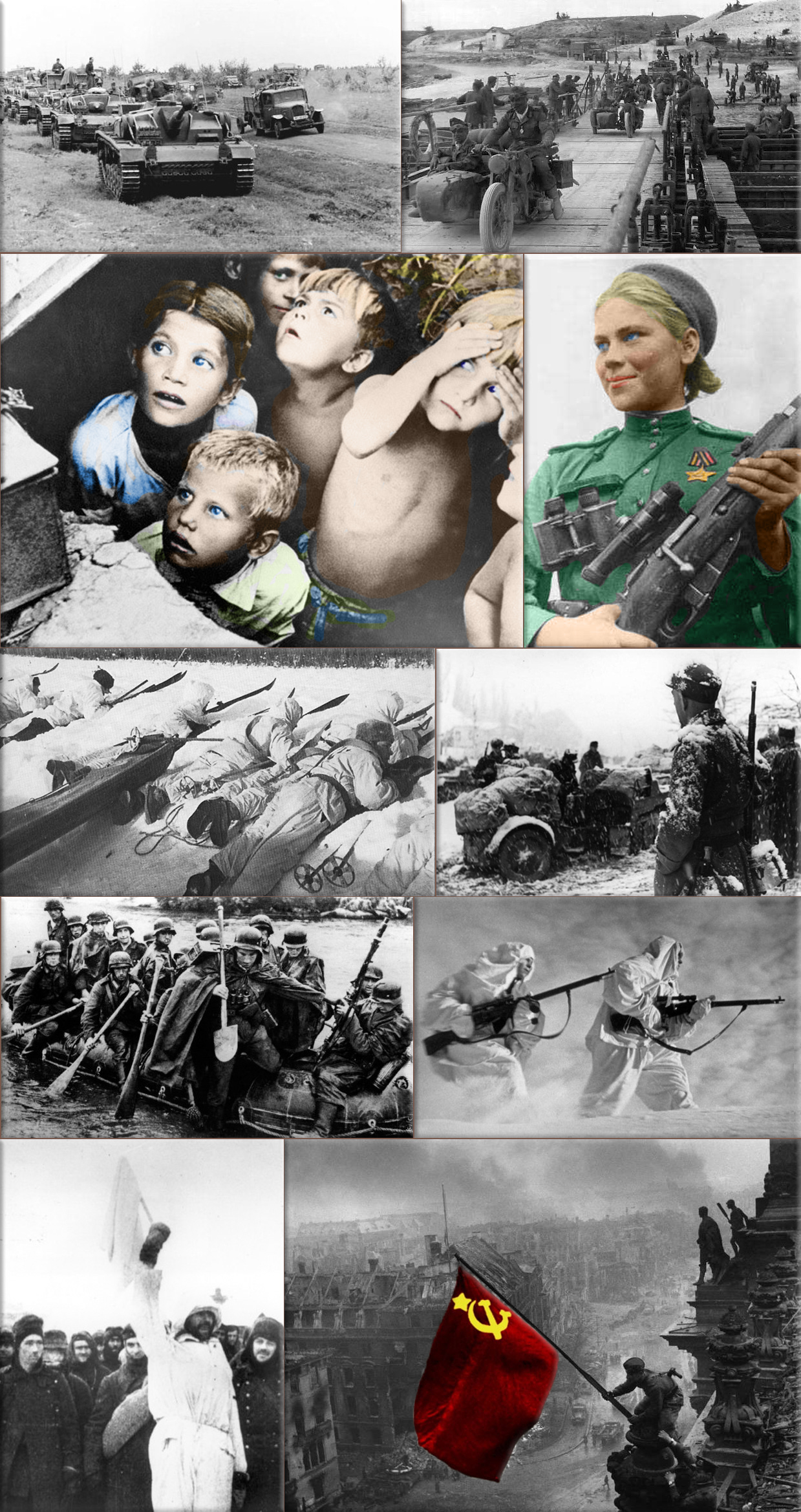
World War II:
1944 - Battle of Monte Cassino Conclusion after seven days of the fourth battle as German paratroopers evacuate Monte Cassino.
1944 - Deportation of Crimean Tatars by the Soviet Union government.
Wikipedia Photo: Bombing of Dresden in World War II; August Schreitmüller's sculpture 'Goodness' surveys Dresden after a firestorm started by Allied bombers in 1945.
USS Bunker Hill was hit by kamikazes piloted by Ensign Kiyoshi Ogawa and another airman on 11 May 1945. 389 personnel were killed or missing from a crew of 2,600; Ensign Kiyoshi Ogawa, who flew his aircraft into the USS Bunker Hill during a Kamikaze mission on 11 May 1945; Kamikaze Missions - Lt Yoshinori Yamaguchi's Yokosuka D4Y3 (Type 33 Suisei) "Judy" in a suicide dive against USS Essex. The dive brakes are extended and the non-self-sealing port wing tank is trailing fuel vapor and/or smoke 25 November 1944.
German V1 flying-bomb and V2 Rockets - Preparations for a Salvo Launch of V-2 Rockets in the Heidelager near Blizna (Poland) (1944), credit German History in Documents and Images GHDI.
Eastern Front (World War II); Germans race towards Stalingrad. August 1942; Soviet children during a German air raid in the first days of the war, June 1941, by RIA Novosti archive; Soviet sniper Roza Shanina in 1944. About 400,000 Soviet women served in front-line duty units Caucasus Mountains, winter 1942/43; Finnish ski patrol: the invisible enemy of the Soviet Army with an unlimited supply of skis; Men of the German Engineers Corps cross a river which is swollen after the first autumn rains, to strengthen bridges linking the German positions on the central front in Russia. by Keystone / Getty Images. October 1942; Russian snipers fighting on the Leningrad front during a blizzard. Photo by Hulton Archive / Getty Images, 1943; German soldiers surrendering to the Russians in Stalingrad, the soldier holding the white flag of surrender is dressed in white so that there could be no doubt of his intentions, a Russian soldier is on the right of the photograph. by Keystone / Getty Images, January 1943.
May 18th, 1948
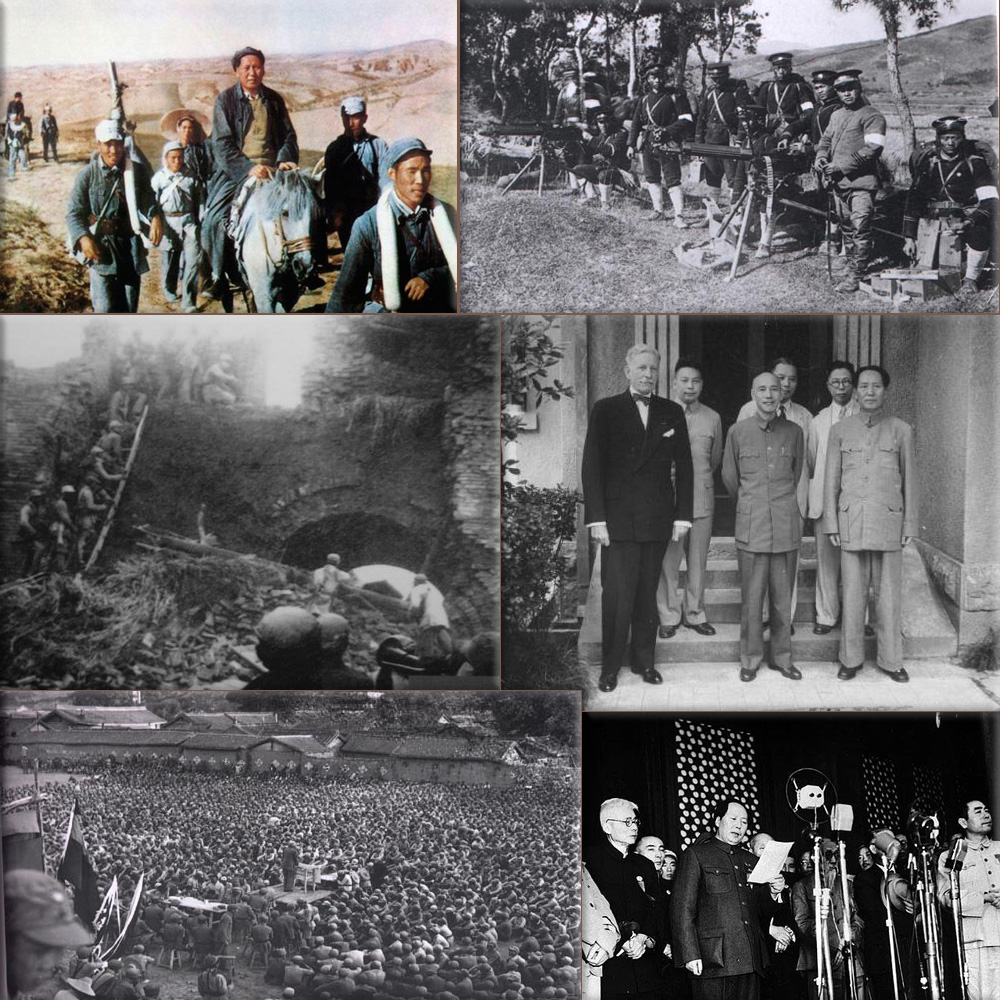
Chinese Civil War:
1948 - The First Legislative Yuan of the Republic of China officially convenes in Nanking.
Wikipedia Photo: In 1934, Mao Zedong headed the Long March. The Long March was when the Chinese Nationalists, led by Chiang Kai-shek, forced the Chinese Communists, led by Mao Zedong, on a march to the caves of Shaanxi. (colorized); Government soldiers train with modern machine guns; People's Liberation Army attacking government defensive positions in Shangtang; US diplomat Patrick J. Hurley, Chiang Ching-kuo, Chiang Kai-shek, Chang Ch'ün, Wang Shi Jie (王世杰), Mao Zedong; A Communist leader addressing Long March survivors; The PLA enters Beijing in the Pingjin Campaign and control the later capital of PRC.
May 18th, 1953

Jacqueline Cochran becomes the first woman to break the sound barrier.
Wikipedia Photo: Jacqueline Cochran National Air and Space Museum Archives, Smithsonian Institution SI-86-533. ● Women’s Airforce Service Pilots in World War II Jacqueline Cochran and Nancy Harkness Love—propose the use of women pilots in the armed forces, credit Women.Rice.edu
May 18th, 1955


Vietnam War:
1955 - Operation Passage to Freedom; First Indochina War ends: The evacuation of 310,000 Vietnamese civilians, soldiers and non-Vietnamese members of the French Army from communist North Vietnam to South Vietnam.
Wikipedia Photo: Vietnam_War; Side view of an HH-53 helicopter of the 40th Aerospace Rescue and Recovery Squadron as seen from the gunner's position on an A-1 of the 21st Specialist Operations Squadron. (USAF Photo by Ken Hackman), Boston Globe;
Boeing B-52 Stratofortress, credit Free Republic;
Vietnam War: The Big Picture / Boston Globe.
May 18th, 1958

An F-104 Starfighter sets a world speed record of 1,404.19 mph (2,259.82 km/h).
Wikipedia Photo: Lockheed F-104 Starfighter
May 18th, 1969
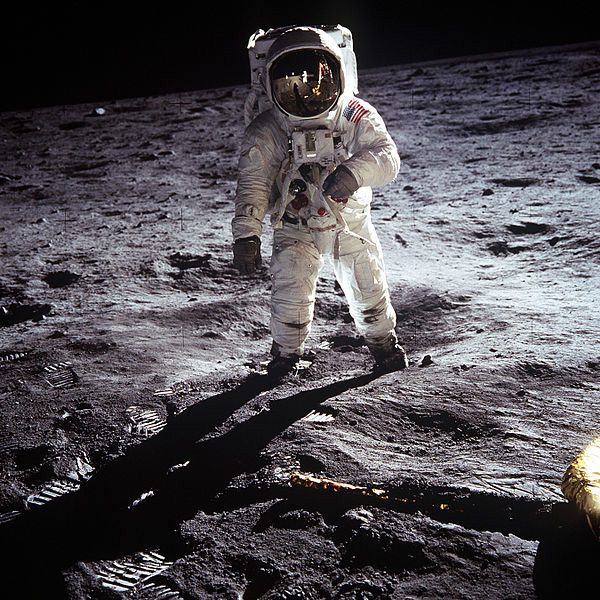

Apollo Program: NASA's Apollo 10 spacecraft is launched.
Wikipedia Photo: Apollo Program: Apollo 11 first manned Moon landing and the first walk on the surface on the moon. Astronaut Buzz Aldrin walks on the surface of the moon near the leg of the lunar module Eagle. Apollo 11 Commander Neil Armstrong took this photograph with a 70mm lunar surface camera. Armstrong and Aldrin explored the Sea of Tranquility for two and a half hours while crewmate Michael Collins orbited above in the command module Columbia.
The Blue Marble is a famous photograph of the Earth, taken on December 7, 1972, by the crew of the Apollo 17 spacecraft, at a distance of about 45,000 kilometres (28,000 mi).
May 18th, 1974
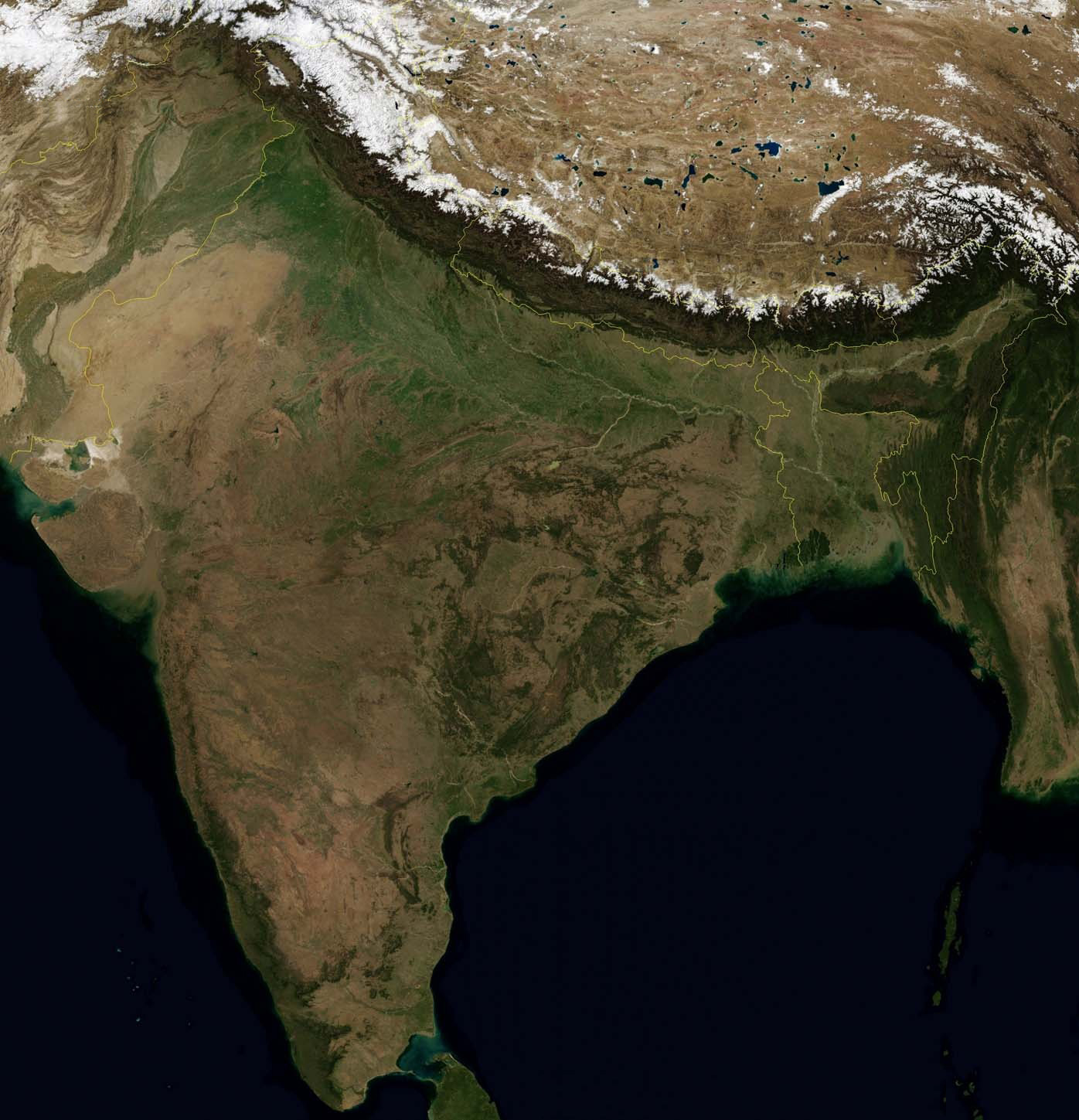
Indian subcontinent:
1974 - Nuclear test; Project Smiling Buddha; India successfully detonates its first nuclear weapon becoming the sixth nation to do so.
Wikipedia Image: Map Satellite India, Pakistan, Nepal, Bhutan, Tibet AR, Bangladesh.
May 18th, 1980
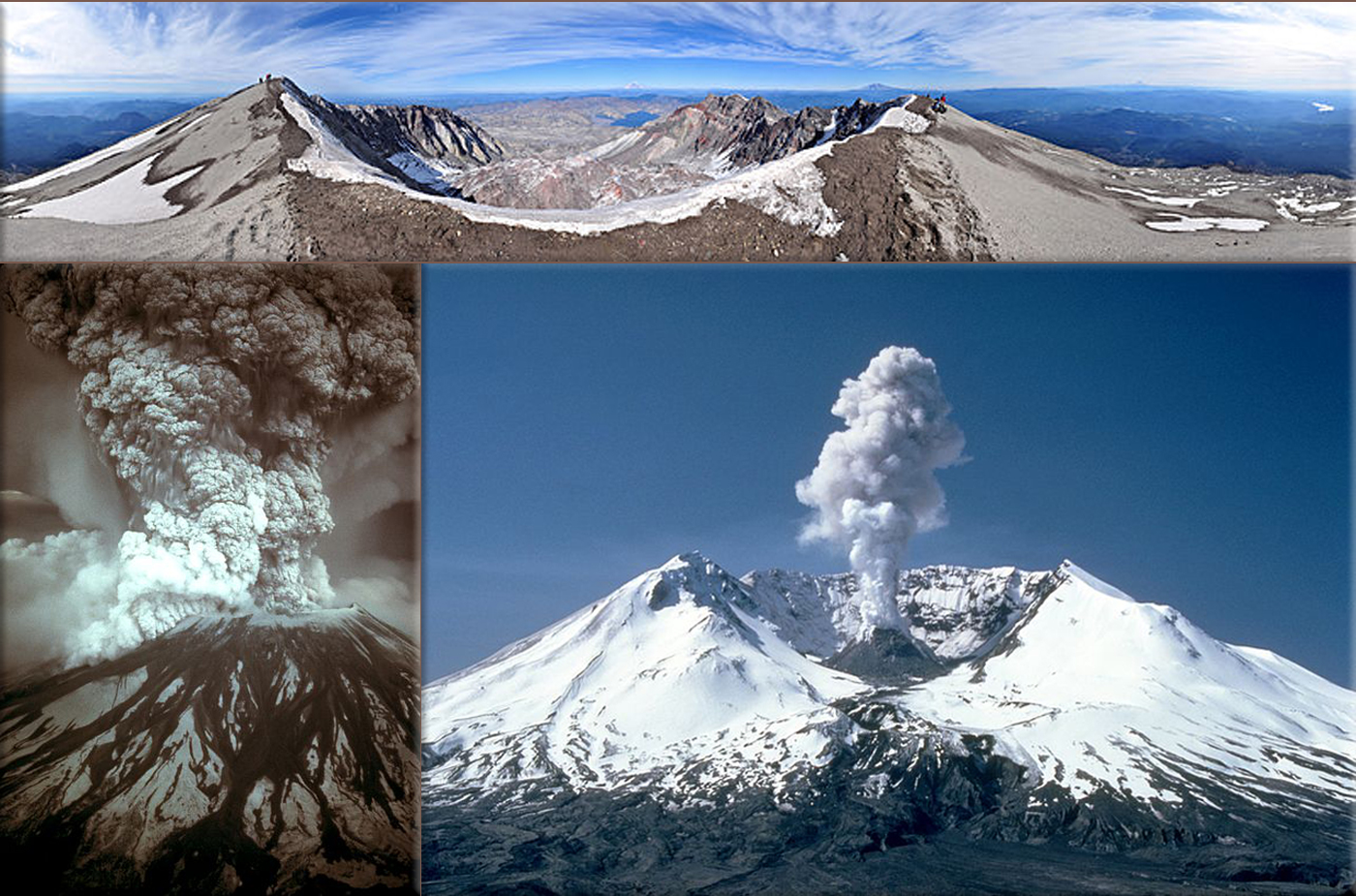
1980 eruption of Mount Saint Helens: Mount Saint Helens erupts in Washington (state) , killing 57 people and causing $3 billion in damage.
Wikipedia Photo: Mount Saint Helens 360° panorama from the summit of Mount St. Helens as seen in October 2009 ● Photograph of the eruption column, May 18, 1980 ● 3,000 ft (1 km) steam plume on May 19, 1982, two years after its major eruption.
May 18th, 1990
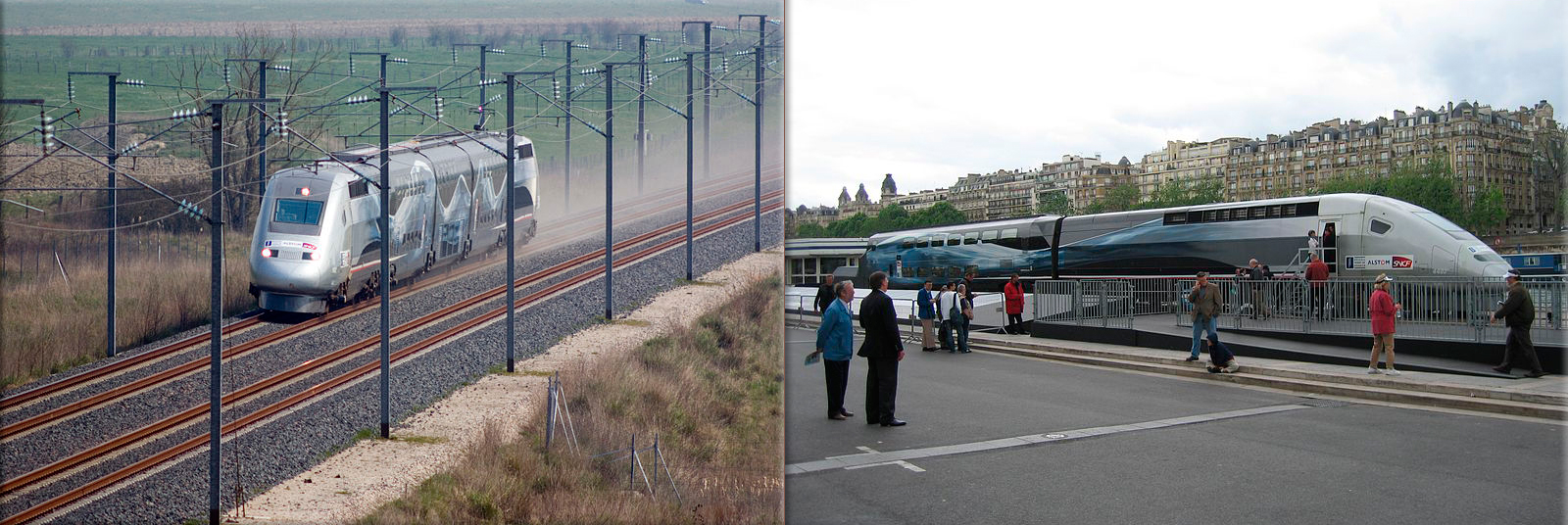
In France, a modified TGV train achieves a new rail world speed record of 515.3 km/h (320.2 mph).
Wikipedia Photo: Conventional-Train World Speed Record; TGV 4402 (operation V150) reaching 574 km/h on 3 April 2007 near Le Chemin, France. ● Part of TGV trainset 4402 displayed near the Eiffel Tower after the record.
May 18th, 2005

A second photo from the Hubble Space Telescope confirms that Pluto has two additional moons: Nix and Hydra.
Wikipedia Image: Pluto, center and it's previously known moon Charon, below Pluto and right of center, shine brightly. Two newly discovered moons appear more faintly to the right of the pair. ● Artist's concept above shows the Pluto system from the surface of one of the candidate moons. credit: NASA
May 18th, 2012

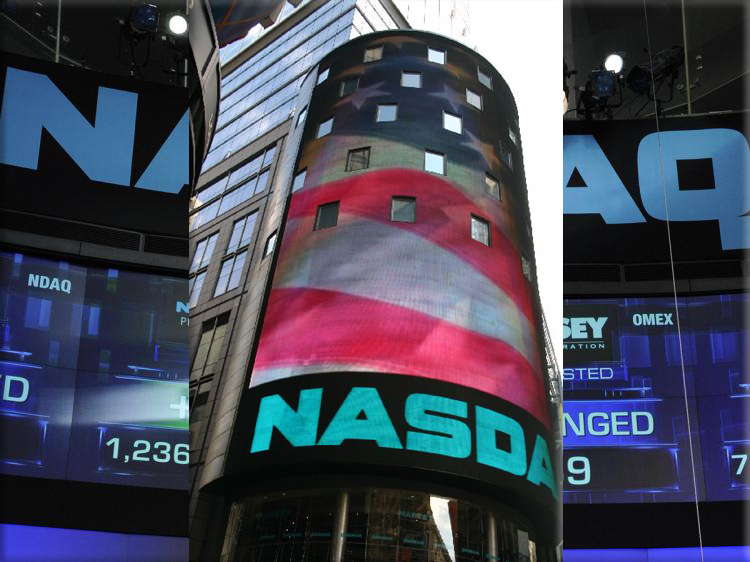
Facebook, Inc. begins selling stock to the public and trading on the NASDAQ investors to compensate for (the largest civil settlement in United States history).
Wikipedia Photo: Facebook; a social networking service launched in February 2004, owned and operated by Facebook, Inc. ● © The NASDAQ Board in NYC Times Square District.
May 18th, 2015
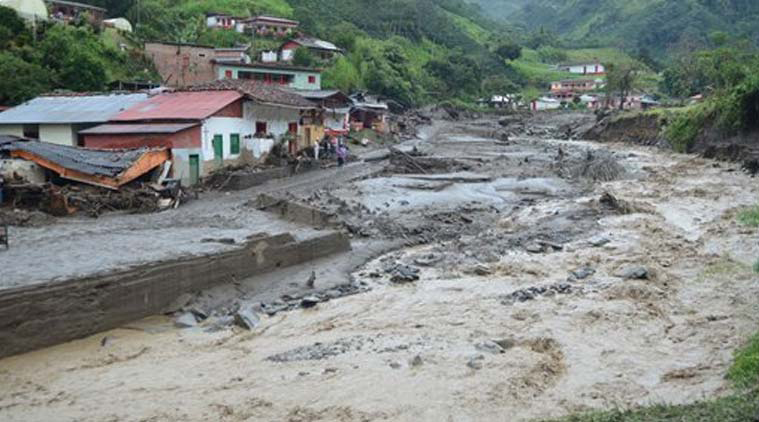
Colombian landslide: At least 78 people die in a landslide caused by heavy rains in the Colombian town of Salgar.
Wikipedia Photo: Colombian landslide: At least 78 people die in a landslide caused by heavy rains in the Colombian town of Salgar. (Source: Associated Press)
